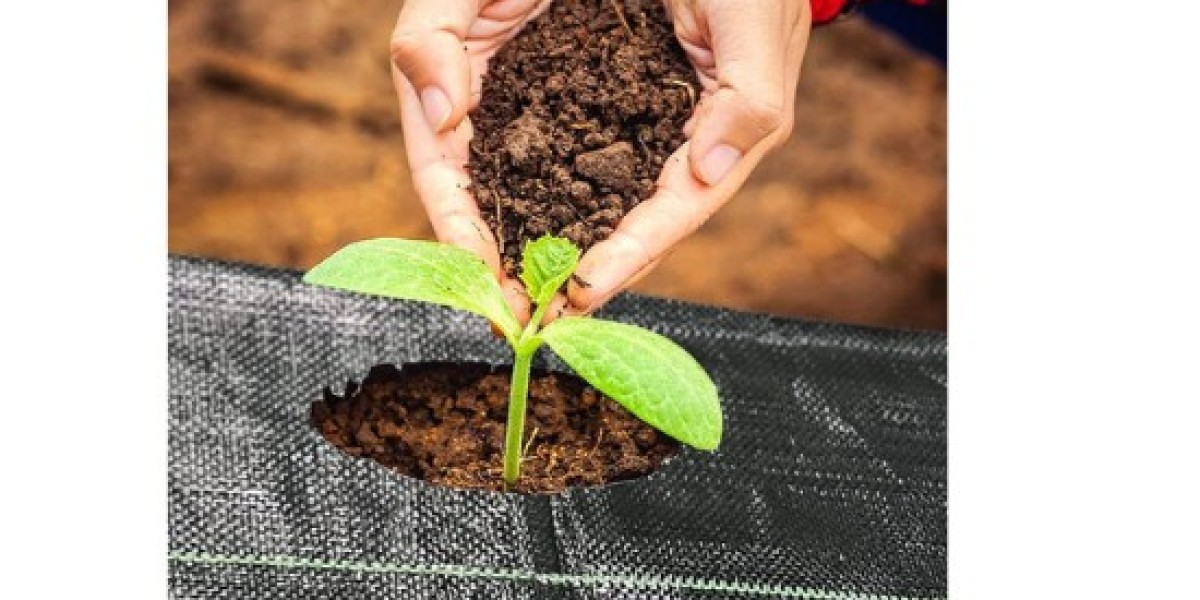Weeds can be a gardener's worst enemy, competing with plants for nutrients, water, and sunlight, and often ruining the aesthetic appeal of gardens, landscaping projects, and agricultural spaces. One of the most effective and eco-friendly ways to combat weeds is through the use of a Weed Control Mat. These mats are designed to act as a physical barrier, preventing weed growth without the need for harsh chemicals or excessive labor.
In this comprehensive guide, we'll explore what a weed control mat is, how it works, the different types available, and the benefits it offers. We’ll also help you choose the right mat for your needs and provide answers to some frequently asked questions (FAQs) about weed control mats.
What is a Weed Control Mat?
A weed control mat, also known as a weed barrier or landscape fabric, is a permeable, woven, or non-woven material that is placed on the soil surface to block the sunlight weeds need to grow. These mats are usually made from synthetic materials like polypropylene or biodegradable options like jute and coco coir, depending on environmental preferences. By acting as a barrier, the mat suppresses weed growth while still allowing air, water, and nutrients to reach the soil, ensuring that your plants thrive without unwanted competition.
How Does a Weed Control Mat Work?
Weed control mats are laid directly over the soil and can be secured in place using garden stakes or pins. Once installed, the mat creates an environment where weed seeds struggle to germinate due to the lack of sunlight and restricted access to air. However, because the mat is permeable, water and nutrients can still pass through to the soil, ensuring that the plants you want to grow are unaffected.
These mats are often covered with mulch, gravel, or soil to improve their appearance and further enhance their weed-blocking abilities. The combination of the mat and a top layer creates a powerful, long-lasting weed prevention solution.
Types of Weed Control Mats
There are several types of weed control mats available, each offering different benefits depending on your specific needs:
Woven Weed Control Mats: These mats are made from tightly woven polypropylene or polyester fibers, offering a durable and long-lasting solution. Woven mats are ideal for large-scale agricultural projects, landscaping, and areas with heavy foot traffic because they are strong and resistant to tearing.
Non-Woven Weed Control Mats: These mats are made from non-woven synthetic fabrics and offer excellent water permeability. Non-woven mats are best suited for garden beds and areas where soil moisture is a priority, as they allow for better water flow while still effectively suppressing weeds.
Biodegradable Weed Control Mats: Made from natural materials like jute, coir, or straw, biodegradable mats are eco-friendly and break down over time. These mats are perfect for environmentally conscious gardeners who prefer a sustainable solution. Biodegradable mats enrich the soil as they decompose, providing nutrients to your plants.
Plastic Weed Control Mats: Plastic mats are highly effective at suppressing weeds and are typically used in vegetable gardens or landscaping projects. However, they offer less permeability than woven or non-woven options, meaning water and air may not pass through as easily.
Benefits of Using a Weed Control Mat
Using a weed control mat offers numerous advantages for both home gardeners and professional landscapers:
Effective Weed Suppression: A weed control mat creates a physical barrier that prevents weed seeds from germinating, effectively reducing the number of weeds in your garden or landscape. This allows your desired plants to flourish without competition for resources.
Reduced Need for Herbicides: By using a weed control mat, you can minimize or eliminate the need for chemical herbicides, making your gardening practices more environmentally friendly. This is particularly important for organic gardening and eco-conscious landscaping projects.
Low Maintenance: Once installed, a weed control mat requires minimal upkeep. You won’t have to constantly pull weeds, saving you time and energy. The mat remains effective for several years, depending on the type and quality chosen.
Water Conservation: Weed control mats can help retain soil moisture by reducing evaporation, especially when paired with a layer of mulch. This is particularly beneficial in dry climates or during hot summer months, as it helps your plants stay hydrated longer.
Improved Aesthetic Appeal: Weeds can detract from the appearance of a garden or landscaped area. Weed control mats keep your garden looking clean and well-maintained, with no unsightly weeds popping up between plants.
Soil Health: High-quality mats allow for good airflow and water drainage, which helps maintain healthy soil. Some biodegradable mats even contribute organic material to the soil as they decompose, enriching its quality over time.
Versatility: Weed control mats can be used in a variety of settings, including flower beds, vegetable gardens, pathways, and even agricultural fields. They are also ideal for use under gravel, mulch, or stone in landscaping projects.
How to Choose the Right Weed Control Mat
When selecting a weed control mat, consider the following factors to ensure you get the best product for your needs:
Material: The material of the mat will influence its durability, permeability, and environmental impact. If you need a long-lasting solution for a commercial project, a woven polypropylene mat is a great choice. For eco-friendly gardeners, biodegradable mats made from natural fibers are ideal.
Permeability: Ensure the mat allows water, air, and nutrients to pass through to the soil. This is essential for maintaining healthy plants. Non-woven and biodegradable mats tend to offer better permeability than plastic options.
Durability: If you are installing the mat in a high-traffic area or a place where it may be exposed to heavy machinery, choose a mat that is tear-resistant and durable. Woven mats are known for their strength and long-lasting performance.
Size and Coverage: Weed control mats come in various sizes. Make sure to measure your garden or project area to purchase enough material to cover the entire space. Most mats can be cut to fit specific areas or shapes.
Cost: While Weed Mat Price are generally affordable, prices can vary based on the material and size. Consider your budget, but remember that investing in a high-quality mat can save you time and money in the long run by reducing the need for weed management.
Installation Tips for Weed Control Mats
Installing a weed control mat is a simple process, but following the proper steps ensures optimal effectiveness:
Prepare the Soil: Clear the area of any existing weeds, debris, and rocks. You may also want to add a layer of compost or fertilizer to the soil before installing the mat.
Lay the Mat: Roll out the mat across the designated area, ensuring full coverage. Overlap any seams to prevent weeds from growing through gaps. If needed, cut the mat to fit around plants or structures.
Secure the Mat: Use landscape staples or garden pins to anchor the mat in place. Ensure that the edges are secure, especially in windy areas.
Cover with Mulch or Gravel: For a more polished look and added protection, cover the mat with a layer of mulch, gravel, or stones. This also helps to weigh the mat down and further suppress weed growth.
Conclusion
A Weed Mat Manufacturers In Gujarat is a highly effective, low-maintenance solution for gardeners and landscapers looking to suppress weed growth and maintain a clean, well-kept garden or landscape. Whether you’re managing a large-scale agricultural project or maintaining a small backyard garden, weed control mats offer numerous benefits, from reducing herbicide use to conserving water and improving soil health.
By selecting the right type of mat for your needs, following proper installation techniques, and understanding how to maintain the mat over time, you can enjoy a weed-free garden with minimal effort. With the added bonus of being environmentally friendly, weed control mats are a great investment for any gardener looking to keep their plants healthy and thriving without the constant battle against weeds.
FAQs
1. Can I plant flowers or vegetables through a weed control mat?
Yes, you can plant through a weed control mat. Simply cut small holes or slits in the mat where you want to place your plants. This allows the plants to grow while still preventing weeds from emerging around them.
2. How long do weed control mats last?
The lifespan of a weed control mat depends on the material and environmental conditions. Woven and non-woven synthetic mats can last anywhere from 5 to 15 years, while biodegradable mats typically last 1 to 3 years before breaking down.
3. Are weed control mats environmentally friendly?
Weed control mats made from biodegradable materials like jute or coco coir are eco-friendly and break down over time, contributing to soil health. Synthetic mats are less environmentally friendly but can be a long-lasting solution that reduces the need for herbicides.
4. Do weed control mats prevent all weeds?
While weed control mats are highly effective at reducing weed growth, they may not eliminate all weeds. Some particularly resilient weeds may find their way through small gaps or the edges of the mat. However, the mat will significantly reduce the amount of weeding needed.



